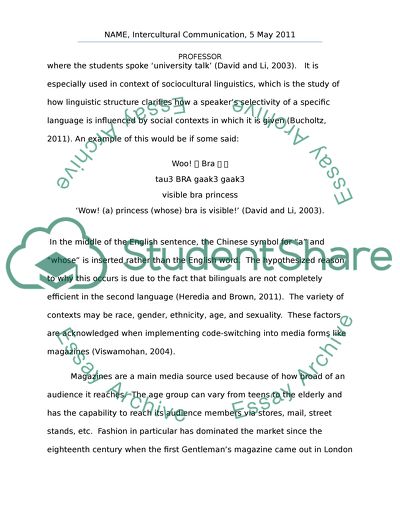Cite this document
(“Chinese-English code-switching in Fashion Magazines Essay”, n.d.)
Retrieved from https://studentshare.org/visual-arts-film-studies/1419447-chinese-english-code-switching-in-fashion-magazines
Retrieved from https://studentshare.org/visual-arts-film-studies/1419447-chinese-english-code-switching-in-fashion-magazines
(Chinese-English Code-Switching in Fashion Magazines Essay)
https://studentshare.org/visual-arts-film-studies/1419447-chinese-english-code-switching-in-fashion-magazines.
https://studentshare.org/visual-arts-film-studies/1419447-chinese-english-code-switching-in-fashion-magazines.
“Chinese-English Code-Switching in Fashion Magazines Essay”, n.d. https://studentshare.org/visual-arts-film-studies/1419447-chinese-english-code-switching-in-fashion-magazines.


